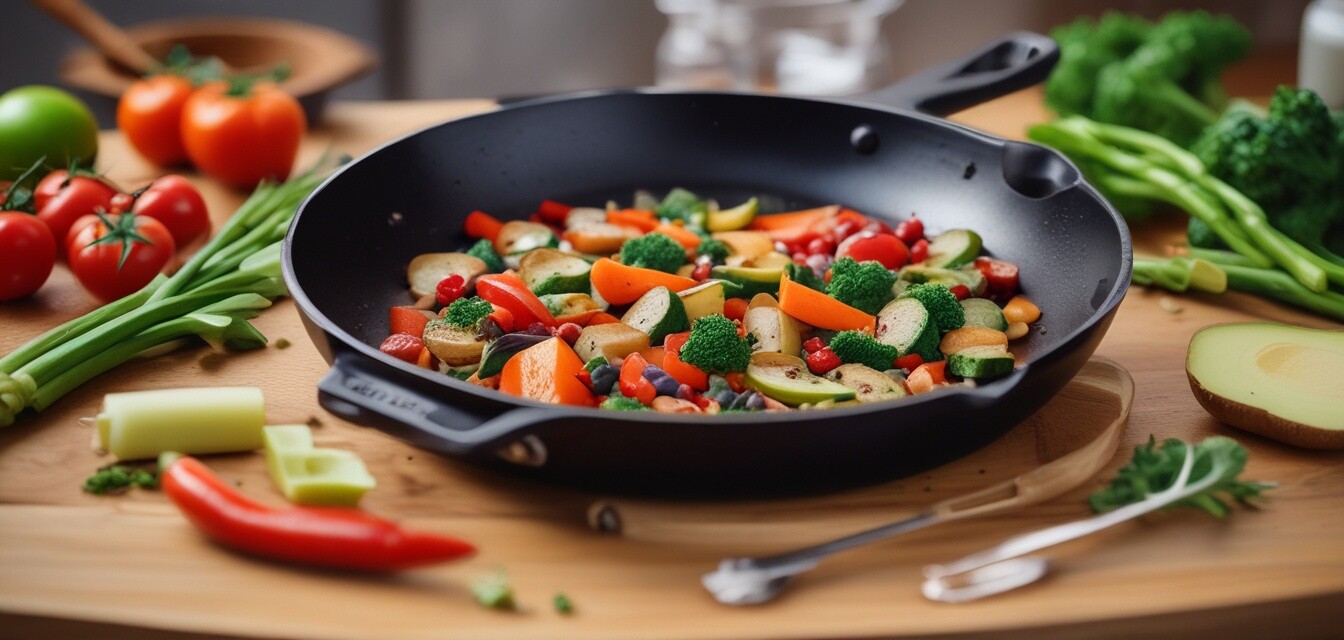
Essential Tips for Perfecting Your Sautéing Skills
Key Takeaways
- Use the right pan and oil for sautéing.
- Learn proper knife skills for even cooking.
- Control heat to achieve the best results.
- Always prep your ingredients before starting.
- Practice makes perfect — don't be afraid to experiment!
Sautéing is a fundamental cooking technique that every home chef should master. This method allows you to cook food quickly while retaining moisture and flavor. Whether you’re working with vegetables, proteins, or grains, knowing how to sauté properly can elevate your culinary skills and enhance your dishes. Let’s dive into the essential tips that will perfect your sautéing skills, making your cooking experiences more enjoyable and flavorful!
Understanding Sautéing
Before we jump into tips, let's define sautéing. Sautéing is a quick cooking method, typically done over medium to high heat. Food is cooked in a small amount of fat, usually in a shallow pan. Here’s what you need to know:
| Term | Definition |
|---|---|
| Sauté | To cook food quickly in a small amount of oil or fat. |
| Pan | A shallow container used for cooking food on the stovetop. |
| Fat | Oil or butter used to prevent food from sticking and for flavor. |
Essential Tips for Successful Sautéing
1. Choose the Right Pan
Using a good-quality skillet is crucial for effective sautéing. A non-stick or stainless steel skillet can be excellent choices. Here are some options to consider:
| Pan Type | Pros | Cons |
|---|---|---|
| Non-Stick | Easy to clean, good for low-fat cooking. | May not be suitable for high-heat cooking. |
| Stainless Steel | Durable, can withstand high heat, great for browning. | Food may stick if not heated properly. |
| Cast Iron | Excellent heat retention, develops natural non-stick. | Heavy, requires maintenance to keep seasoned. |
2. Select the Right Oil
The oil you choose will affect both flavor and cooking temperature. Here’s a quick guide to oils:
- Olive Oil: Perfect for low to medium heat, adds rich flavor.
- Canola Oil: High smoke point, neutral flavor.
- Butter: Adds flavor but burns quickly, consider blending with oil.
3. Prep Your Ingredients
Before you start sautéing, make sure everything is prepped. Cut your ingredients uniformly to ensure even cooking. This means:
- Wash and dry vegetables and proteins.
- Chop or slice according to your recipes.
- Have everything ready to go to avoid overcooking.
4. Learn Proper Heat Control
Heat control is essential for perfect sautéing. Start at medium heat to prevent burning. Here’s how to know if your pan is ready:
- Drop a small amount of water; if it sizzles, the pan is ready.
- Check if oil shimmers or moves easily in the pan.
5. Don’t Overcrowd the Pan
It's tempting to throw everything into the pan at once, but overloading can lower the temperature and lead to steaming instead of sautéing. Follow these steps:
- Cook in smaller batches if necessary.
- Leave space between pieces for proper browning.
6. Stir and Toss with Confidence
Movement is critical when sautéing. Use a spatula or wooden spoon to keep your food in motion. This ensures even cooking and prevents sticking. Here’s how to do it right:
- Lift and flip ingredients, letting them cook evenly.
- Toss gently to keep delicate items intact.
7. Season at the Right Time
Timing your seasonings can make a huge difference. Here’s what to consider:
- Season just before removing from heat for maximum flavor.
- Experiment with fresh herbs and spices for creative flair.
Common Sautéing Mistakes to Avoid
Even seasoned cooks can make mistakes. Here are some common pitfalls to avoid:
- Not preheating the pan.
- Using too much oil.
- Not paying attention to the heat level.
- Using cold ingredients straight from the fridge.
Conclusion
Mastering sautéing is a fantastic way to elevate your everyday cooking. By following these essential tips, you’ll develop your skills and confidence in the kitchen. Remember, practice is key! Soon enough, you’ll be sautéing like a pro. For more insights and tips on improving your kitchen skills, don't forget to check out our [Buying Guides](https://www.kitchencookingproducts.com/blog/buying-guides) and explore our favorite [Kitchen Gadgets & Tools](https://www.kitchencookingproducts.com/products/kitchen-gadgets-tools).